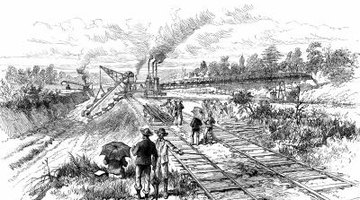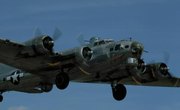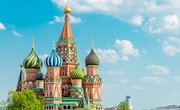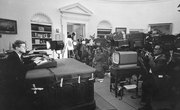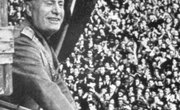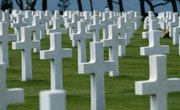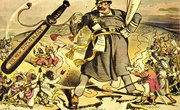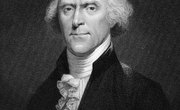The Panama Canal, constructed by the United States, first opened in 1914 and connected the Pacific and Atlantic Oceans across the narrow isthmus of Panama. The Canal's construction, however, was not simple, and required the U.S. to flex its military muscle and even instigate a rebellion by Panamanian nationalists against Colombia. This conflict reflects the sinister nature of U.S. imperialism at the turn of the century.
The Need
Prior to the construction of the Panama Canal, ships sailing to the Pacific had to sail all the way around South America's Cape Horn. This presented a particular problem for the United States, which needed to keep up regular maritime trade with its western coast. When gold was discovered in California in 1848 and the American west began substantial development, a canal connecting the oceans became an economic necessity for the U.S.
The French Project
The first project to build a canal across the isthmus of Panama did not come from the United States, but rather a French company run by Ferdinand de Lesseps, who had gained fame with his 1869 construction of the Suez Canal. The French attempt, however, failed as diseases such as malaria and yellow fever killed over 20,000 workers in the eight years de Lesseps worked on the canal.
Panamanian Independence
In 1901 U.S. President Theodore Roosevelt sought to take over the project form the French and finish construction of the canal. Colombia, which at the time owned the land, rejected the bid as an attempt at U.S. imperialism. Roosevelt therefore promised the Panamanians, who had been trying to gain independence from Colombia, that the U.S. Navy would aid them, an oft-used U.S. tactic known as gunboat diplomacy.
The Canal Zone
In exchange for U.S. aid, in 1904 the newly independent Panama sold the U.S. the land where the canal would be built for only $10 million. This new Panama Canal Zone became U.S. territory, and by 1914 the canal was completed. The economic benefit to the U.S. was measureless. The Canal Zone would remain a U.S. territory until 1999.
Related Articles
References
Writer Bio
Aatif Rashid writes on international politics and culture. His articles have appeared in magazines such as "The Oxonian Globalist" and online at Future Foreign Policy and ThinkPolitic. He holds Bachelor's degrees in English and history from U.C. Berkeley and a Masters degree from the University of Oxford.

